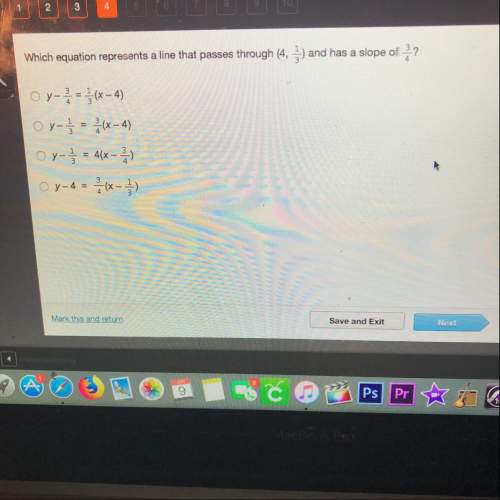
Mathematics, 10.06.2020 04:57 liliJ
Suppose you have two tanks filled with a liquid that contains some chemical in it. Assume that the individual tanks are always perfectly stirred. Let’s use 1()C1(t) and 2()C2(t) to denote the concentrations of chemical in each of the two tanks, in units of mass per unit volume. Assume that the respective volumes of the tanks are 1V1 and 2V2.There a pump connecting the tanks which circulates the liquid between the them at a constant volumetric flow rate q. That is, during each unit of time, qis the volume of liquid that has moved from tank 1 to tank 2, and it is also the volume of liquid that has moved from tank 2 to tank 1.
(a) Write the differential equations coming from conservation of mass. You can input things like "C1", "C2", "q", "V1", "V2" and "t".
/(11) =
/(22) =
(b) Now define x⃗()=(1(),2())x→(t)=(C1(t), C2(t)) and write the DE system as x⃗′()=x⃗(). What is your coefficient matrix
(c) What is the determinant of the coefficient matrix?
(d) Given this fact, what kind of situation are we in here?
saddle point
stable node
unstable node
one equilibrium on an entire line of equilibria
stable spiral
unstable spiral
stable center
stable degenerate node
unstable degenerate node
(e) Is this a stable system? Or could 1C1 or 2C2 grow without bound?
stable
unstable
(f) There are a few ways to know the answer to part (e): you could think intuitively about conservation of mass, you could check the trace of A, or you could look at eigenvalues. Find the eigenvalues and provide the eignvalue that could tell you the answer to part (e):
(g) Suppose that initially we have 1(0)=C1(0)=a and 2(0)=C2(0)=b. What happens to the concentrations in the long term1C1 approaches 2C2 approaches Try to answer this by thinking about conservation of mass. If you are stuck, then you could also do part (h) and then use the result to figure out part (g).
(h) Still assuming that the initial conditions are 1(0)=C1(0)=a and 2(0)=C2(0)=b, determine the concentrations for all time.1() = C1(t) = 2() = C2(t) =

Answers: 1


Another question on Mathematics

Mathematics, 21.06.2019 14:30
Find the value of 1715⋅211.though these numbers aren't quite as nice as the ones from the example or the previous part, the procedure is the same, so this is really no more difficult. give the numerator followed by the denominator, separated by a comma.
Answers: 1

Mathematics, 21.06.2019 18:30
Logan wants to know how many skateboards have defective parts. he inspects 20,000 skateboards and keeps track of the number of defects per board. use his probability distribution table to find the expected value for defects on a skateboard.
Answers: 3

Mathematics, 21.06.2019 19:00
The weight of an object in the water is 7% of its weight out of the water. what is the weight of a 652g object in the water?
Answers: 1

You know the right answer?
Suppose you have two tanks filled with a liquid that contains some chemical in it. Assume that the i...
Questions

Mathematics, 24.11.2020 20:10

Chemistry, 24.11.2020 20:10

Mathematics, 24.11.2020 20:10

Health, 24.11.2020 20:10


Mathematics, 24.11.2020 20:10

Mathematics, 24.11.2020 20:10




Mathematics, 24.11.2020 20:10




Chemistry, 24.11.2020 20:10

English, 24.11.2020 20:10




Mathematics, 24.11.2020 20:10




